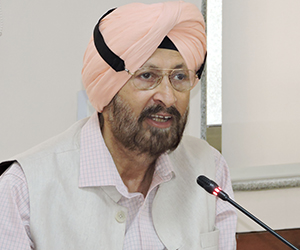A recent intelligence report, purportedly issued by the Research and Analysis Wing (R&AW), India’s external intelligence agency, has warned of the clear and present danger of a conflict being initiated by China along its border with India ostensibly to divert attention from mounting domestic problems, including political dissent, economic challenges and social discord. The report points to increased activity by units of the People’s Liberation Army (PLA) in the areas across the Line of Actual Control (LAC) by way of enhanced surveillance and military training exercises which could be tantamount to full dress rehearsals. Recent exercises have included one on the rapid induction of airborne divisions into Tibet in 36 to 48 hours from bases in adjacent military regions. J-10 air-to-ground strike fighters have been battle tested to hit targets in the high-altitude terrain. SU-30 MKK and SU-27 UBK fighter-bombers have also been practising landings in Tibet and have been deployed during summer months.
It has been known for some time that the PLA has been steadily engaged in developing military infrastructure in Tibet in every field of consequence. The railway line from Gormo to Lhasa, which is to be extended further to Shigatse and on to Kathmandu, has made it possible for the PLA to quickly induct and then sustain much larger forces in Tibet than had been the case before it was commissioned. All-weather roads totalling 58,000 km have been constructed so far. Five fully operational airbases have been built at Gongar, Pangta, Linchi, Hoping and Gar Gunsa. New helipads, missile bases, storage sites for ammunition and for fuel, oil and lubricants are being constructed rapidly. Modern military encampments with multi-storey buildings are coming up close to the border with India. This will considerably reduce mobilisation time for deployment on the border. Both land-line (optical fibre cable-based) and radio communications are being improved. Microwave towers now dot the countryside. Several new command and control nodes have come up.
By no stretch of the imagination can it be presumed that these developments are for the welfare of the sparse population. Nor are these designed to support tourism as China claims. Some years ago the conventional wisdom was that the PLA would need one summer season for stocking and inducting troops and would be able to launch military operations against India only over the next summer season. With substantive improvements having been made to improve the PLA’s military posture in Tibet, it will now be possible for the PLA to induct troops and wage war in a single campaign season. Some analysts have estimated the number of fighting formations that could be inducted in a high-level threat scenario in one month as 30 infantry divisions (12,000 soldiers each).
In stark contrast with developments across the border in Tibet, India’s own efforts to improve its defensive posture and military infrastructure along the LAC have been lagging behind. Most of India’s forward infantry divisions are dependent on a single road axis that is mostly one-way throughout its length and sharp bends do not permit the smooth induction of heavy guns and rocket launchers. Even the most conservatively drawn up plans for infrastructure development have failed to achieve targets for one reason or another. It has been reported that only 50 per cent of the work has been completed on 73 road projects sanctioned so far – Arunachal (27), Uttarakhand (18), J&K (14), Himachal Pradesh (7) and Sikkim (7). Additional plans have been made to construct 277 roads with a total length of 13,100 km in all.
However, the issue that needs to be analysed is whether Chinese efforts in Tibet are aimed at bringing about routine improvements in the habitat of the troops in some of the harshest weather conditions in the world, or if there is a clearly an offensive aim in upgrading the military infrastructure. In military parlance, a threat equals capability into intention. While there is absolutely no doubt or ambiguity about the PLA’s concerted efforts to enhance military capabilities in both Lanzhou and Chengdu military regions so as to be able to launch and sustain operations from the LAC along Tibet’s border with India, it is difficult to discern a clear intention to do so in the short term. The formulation that China might do so to divert attention from domestic discord does not appear to be realistic and is therefore unconvincing.
The strategic stakes would be very high and the Chinese leadership will not risk sanctions and international opprobrium as well as the multi-billion dollar mutual trade relationship with India simply to divert the attention of people on the mainland. However, as long as the territorial and boundary dispute between India and China is not resolved to mutual satisfaction, while the probability of conflict remains low in the short term, its possibility cannot be ruled out. This is so because even 15 rounds of border talks between the politically appointed interlocutors have failed to lead to the demarcation of the LAC – the first essential step to ensure that a major patrol clash does not lead to an ugly incident.
Patrol face-offs are common as both sides patrol up to their perception of the LAC and this often results in the transgression of the LAC from the other’s perspective. Though both sides have been adhering to the laid down procedure of warning the opposing patrol through large banners that it has transgressed across the LAC and must immediately go back, a face-off can quickly turn into a shooting match if there is a hot-headed patrol leader on either side. A small incident of this nature can lead to a border conflagration if the situation is not handled with maturity and calmness by the military and political leadership on either side.
What India needs to do is to upgrade its military strategy from dissuasion to deterrence. Genuine deterrence comes only from the ability to launch and sustain major offensive operations into the territory of one’s military adversary. Towards this end, the early raising of at least one strike corps for the mountains is an inescapable operational necessity. As manoeuvre is extremely restricted in the mountains, simultaneous efforts must be made to upgrade the firepower potential of the army and the air force by an order of magnitude. Also, the development of military infrastructure along the border with Tibet must be taken as up a key priority by the MoD.
Published Date: 18th July 2012








.jpeg)
Post new comment